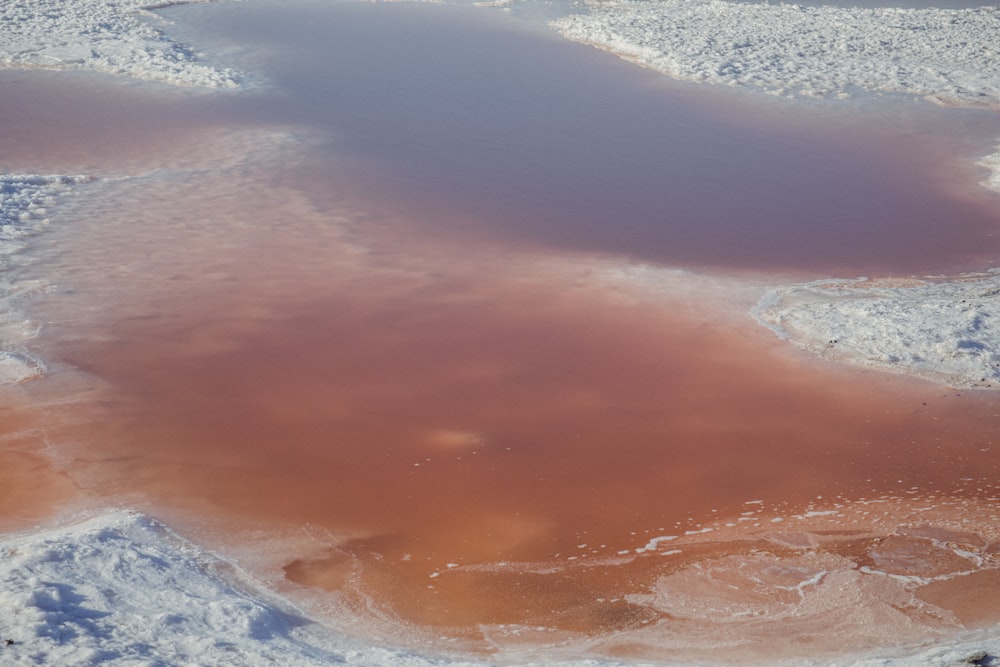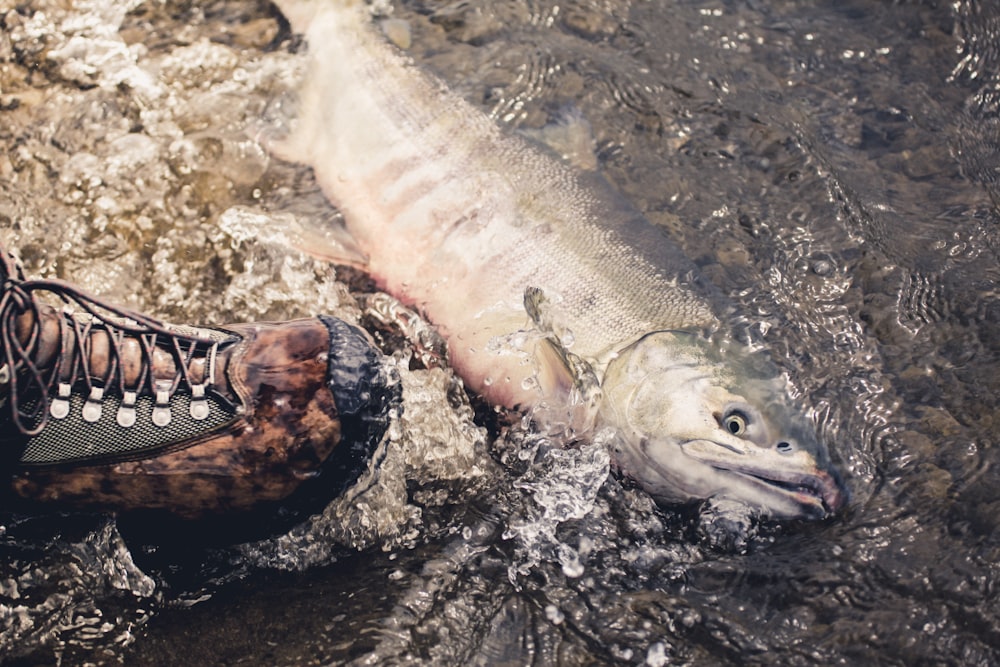Oil Spill| Oil Spill is also one of the biggest human-made disasters. Oil Spills happen usually in the Oceans but sometimes on the Land as well. Oil Spills have a huge effect on the environment and on aquatic life. In this topic, we are going to discuss what causes these oil spills and how we can prevent these kinds of things from polluting our planet. So let's start :

What is an Oil Spill? :
An oil spill is the
appearance of a liquid oil hydrocarbon on the earth, especially in marine
locales, on account of human activity, and is a kind of sullying. The term is
generally applied to marine oil slicks, where oil is discharged into the sea or
waterfront waters yet spills may likewise happen ashore. Oil slicks might be
because of arrivals of raw petroleum from big haulers, seaward stages, boring
apparatuses, and wells, just as spills of refined oil-based commodities, for
example, gas, diesel) and their results, heavier fills fill utilized by huge ships,
for example, dugout fuel, or the spill of any sleek decline or waste oil.
Impact on Aquatic Life :
The Majority of Oil Spills in the ocean impact aquatic life harshly. Oil spills can happen for
a variety of reasons, from careless mistakes or equipment breaking down, to
natural disasters like hurricanes. According to the National Oceanic and
Atmospheric Administration, thousands of oil spills occur in international
waters every year. That said, most are relatively small compared to the big
ones that make the news, often spilling less than one barrel of oil. These
spills have the potential to be very harmful to the environment, marine life,
and even humans. After a spill, since oil is less dense than water, it will
typically float on the surface of the water. It doesn’t just stay there in some
big glob, though. What usually happens is that the oil will rapidly spread out
over the surface of the water until it becomes a thin layer of oil known as an
oil slick. Then it keeps spreading out until it forms a super thin layer called
a sheen. But that thin layer of oil can be a big problem. Oil slicks infiltrate
into the structure of the plumage of feathered creatures and the hide of warm-blooded creatures lessening their protecting capacity and making them
increasingly defenseless against temperature vacillations, and significantly
less light in the water. Our fur-bearing mammal friends, like the adorable sea
otter, can lose their ability to insulate themselves when covered in oil and
birds can lose the water repellency of their feathers. Without proper
insulation, they can end up dying from hypothermia. Not to mention, if they try
to clean themselves, they might ingest some of that oil. While fish, shellfish,
and other underwater creatures can come into contact with oil if it’s mixed
into a water column. Adult fish can experience fin erosion when exposed to oil,
as well as reduced growth rates and enlarged livers. It can also hinder their
reproduction. Even if they can successfully make eggs, the oil can negatively
impact egg and larval survival. What’s worse is that these kinds of things can
last long after the news stops covering them. You know the BP oil spill that
happened about a decade ago? Some reports claim that animals are still being
negatively impacted by the lasting effects of the spill even though cleanup has
largely gotten rid of the initial problem.
How do we clean up Oil Spills? :
Cleanup and recuperation
from an oil slick is troublesome and relies on numerous elements including the
kind of oil spilled the temperature of the water influencing vanishing and bio
corruption and, the sorts of shorelines and beaches involved spills may take
weeks months, or even years to clean up. On April 20th, 2010 an oil rig in the
Gulf of Mexico exploded, spewing thousands of barrels of oil into the coastal
waters a day. The pipe was finally capped 87 days later. 5 years later, 2-16
percent, or possibly more, of the oil still lays on the ocean floor. Scientists
are still assessing the damage to ecosystems and the people who live there. So
how do spills like that get tidied up? What happens to all that oil? The
first step, contain the spill. Oil is insoluble so it doesn’t mix with water.
Instead, it floats on top in a layer just a few centimeters thick. Temporary
floating barriers called booms corral the oil. Above the surface the barriers
look like a string of floating body pillows, circling the oil. Below the
surface, they have a little “skirt” of material that extends a few feet to catch
any oil below. Once the oil’s rounded up, it can be scooped up with skimmers,
kind of like what you might use to get bugs out of a pool. If that doesn’t work
so well, dispersant or chemical emulsifiers can be sprayed. Some dispersants
contain surfactants, the stuff that makes detergents clean your clothes. They
break up the oil and other dirt because their molecules have opposite ends. One
end is hydrophilic, which means it likes water and the other is oleophilic, meaning it
likes oil. These break up the surface tension that stops water and oil from
mixing. Breaking up the oil, makes the oil disperse more easily into the
water. Which could keep the oil from reaching the shoreline and damaging
fragile wetland ecosystems. But some research shows that dispersants are toxic
to coral, so maybe dispersants aren’t the best idea for every spill. What other
tools do we have? Absorbents, like clay and straw, soak up some of a spill but
they also soak up a lot of water. So they’re not ideal. Fortunately, science is
on the case! Researchers from a Swiss materials research institute called Empa
have developed a kind of sponge made of chemically modified wood, called
Nanofibrillated Cellulose. The material soaks up oil but leaves water behind,
and in lab tests, they’re said to have absorbed up to 50 times their own weight
of oil. Another really cool engineered sponge was recently created by Ohio
State University scientists. The nature-inspired technology is described in a
paper published in the journal Scientific Reports. Inspired by lotus leaves,
the stainless steel mesh is coated with silica to create a bumpy exterior. On
top of that bumpy layer is another layer of surfactant. And finally, it’s sealed
with a polymer coating that repels water. One of the researchers says that a
combination of these layers makes for nano-particles that bind to oil. They’re
hoping the mesh could one day be used like a giant sponge soaking up a nasty
oil spill. Both of these technologies are still in the early development phase
though, so it may be a while before they’re put to use in real disasters. As
for the oil that washes up on shore, Sometimes nature can take over, sometimes
with a little help. Biological agents like enzymes or microorganisms can be
added to help speed up the biodegradation process. According to the EPA, this
can either involve “bioaugmentation, where bacteria is added to the spill site
to help biodegrade the oil, or biostimulation, where nutrients are added to
already present oil degraders to stimulate growth. So while oil spills can be
pretty nasty, scientists are always looking for new and better solutions to
cleaning them up.
Recent Oil spills/ Biggest Oil spills/ Famous Oil Spills/ List of Oil Spills:
Biggest/Largest Oil Spills in History:
- The Amoco Cadiz Oil Spill (1978) France Coast.
- The Castillo de Bellver Oil Spill (1983). South Atlantic Ocean near South Africa.
- The Incidents at the Nowruz Oil Field (1983). Persian Gulf
- The Kolva River Spill (1994). The Russian Arctic.
- The Mingbulak (or Fergana Valley) Oil Spill (1992). Uzbekistan.
Recent Oil Spills:
- 2022 Oil Tanker Truck Roll Over. Cheshire, CT USA.
- 2022 Callao oil spill. Callao, Peru.
- 2021 New Orleans Oil Spill. Louisiana, USA
- 2021 Mediterranean oil spill/ Emerald. Israel, Lebanon a Mediterranean shoreline.
- El Palito Refinery. Venezuela
Overall Oil Spills Effects/Impact in present times:
The Main Question is What causes oil spills? The Answer is a lack of precautions taken to reduce the bearing cost by the companies and countries. Oil slicks can have awful ramifications for society monetarily naturally and socially. Therefore oil slick mishaps have started extraordinary media consideration and political commotion uniting numerous in a political battle. Concerning government reaction to oil slicks and what activities can best keep them from occurring. Despite, significant national and universal strategy enhancements for forestalling oil slicks embraced in ongoing decades, huge oil slicks continue happening. In this year 2020 and in 2019 many oil spills happened the biggest one is in Russia’s Siberia region which forced the government to put an emergency in that area. The same kind of thing happened near Ecuador islands and also forced the nation to be on emergency for the environment and health. Many more happened in recent times like near Australia and on the very other oceans. These Oil Spills also cost huge losses to the countries as it takes a lot of money to clean up the mess from the oceans and it costs billions of dollars for that. So economically it is also very bad impacting the economy. Also, Environmental concerns are always there as it impacts aquatic life and green vegetation over the oceans. These oil spills cause many aquatic animals' deaths which may be consumed by others also causing them problems. So to prevent it many oil spill solution are needed on the international level strong treaties are required to stop these oil spills that are binding on every nation.

Some Oil Spill Facts:
- Oil Spills lead to the Painful death of birds by causing hypothermia in them.
- Food Chain gets disrupted mainly in aquatic life as the oil enters the food cycle leading to disruption.
- Our own seafood gets intoxicated as many chemicals get dissolved in the water and then aquatic animals consume that water leading to the intoxication of seafood.
- Volunteers to clean these spills have their health at risk, which is not good at all.
- Oil spills lead to major losses for the countries and economies also.
Thank You










0 Comments
Please Do not enter any spam link in the comment box.